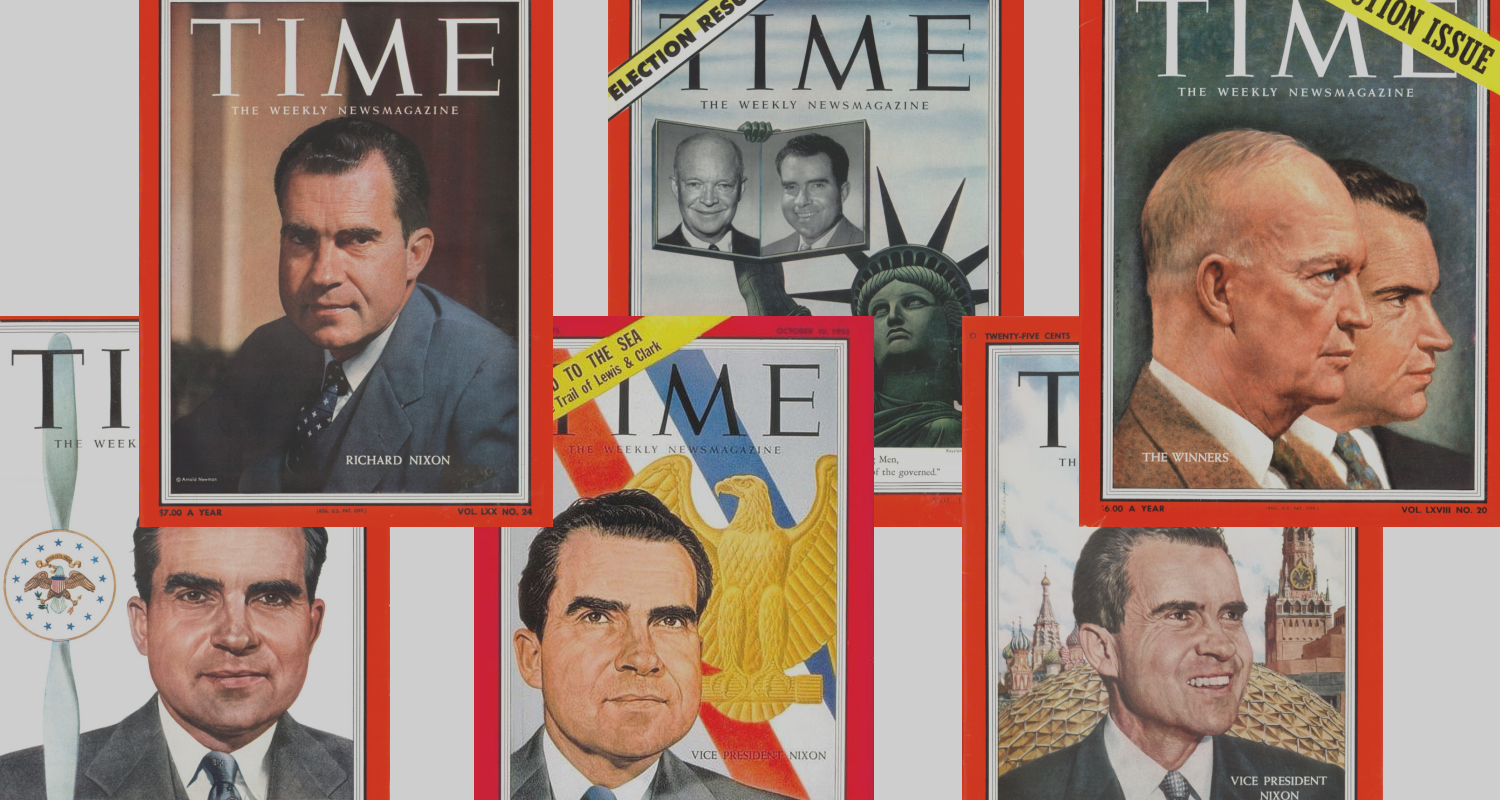1. On July 24, 1959, Vice President Nixon and Soviet Premier Nikita Khrushchev engaged in a series of heated discussions at an American exhibition in Moscow. As the two continued to debate, they moved through several exhibits including a television studio where part of their conversation was broadcasted all over the United States and the Soviet Union. Nixon’s strong debating skills and tenacity boosted his national reputation, resulting in his presidential nomination for the Republican Party the following year.



2. Vice President Nixon met Prime Minister Winston Churchill for the first time in June of 1954. Vice President Nixon was a great admirer of Churchill’s leadership in the face of Nazi aggression during World War Two, arguably the greatest crisis a leader has ever faced. Nixon had read his memoirs and speeches at length and several times.


3. Vice President Nixon was one of the few second in commands to have an acting President temporarily unable to assume their duties. On September 24, 1955, President Eisenhower had a coronary and was hospitalized until he made a complete recovery on November 11, 1955.

4. Vice President Nixon and Pat Nixon cheated certain death as their automobile was nearly flipped over and torched by student protesters during a goodwill tour in Caracas, Venezuela. At the last moment, the car in front of them was able to break away from the students and the Vice President and the second lady were able to drive away to safety.



5. On April 17, 1959, Vice President Nixon met with a triumphant Fidel Castro, who had overthrown the oppressive Batista regime in Cuba. During the meeting, Nixon correctly estimated that Castro had no intentions of opening up free elections and that he was secretly a communist sympathizer.

6. Vice President Nixon served as a mediator between the red baiting Senator McCarthy and the Eisenhower administration. As McCarthy became unruly in his communist allegations, Nixon urged McCarthy to use restraint in attacking his own administration and the military.

7. Vice President Nixon was the first foreign state official to visit Japan since the end of World War II; he was warmly received.




8. In 1953, Vice President Nixon went on an Asian goodwill tour to meet with Asian world leaders; the trip proved to be a critical diplomatic experience that would later help him as President. Among the many countries Nixon visited, he stopped in New Zealand, Australia, Korea, Indonesia, Malaysia, Cambodia, Vietnam, Laos, the Philippines, Burma, and Japan.



9. Vice President Nixon was instrumental in pushing through the Civil Rights Act of 1957. As leader of the Senate, Nixon effectively coordinated and collected the votes necessary for the passage of the bill. The bill was important in protecting African American voters from being disfranchised by Jim Crow laws in the south.

10. Vice President Nixon always made time to speak to average people when he traveled abroad or even with U.S citizens. Vice President Nixon believed that the philosophies of the people were just as important as those of their leaders.



